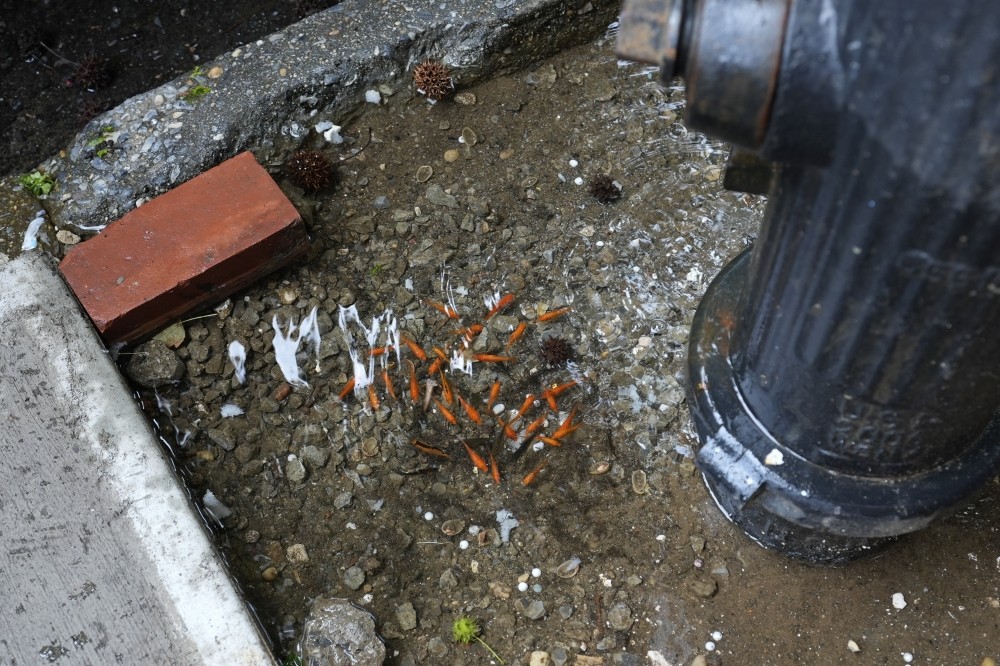10/08/2024
10/08/2024

NEW YORK, Aug 10, (AP): A couple of longtime Brooklyn residents were lounging in the heat last week, staring at a sidewalk tree pit often flooded by a leaky fire hydrant, when they came up with the idea for a makeshift aquarium.
"We started joking about: what if we added fish,” recalled Hajj-Malik Lovick, 47, a lifelong resident of the Bedford-Stuyvesant neighborhood. "Since the water is always there sitting in the puddle, why not turn this into something that’s more interesting?”
After fortifying the edges of the tree bed with rocks and brick, they bought 100 common goldfish from a pet store for $16 and dumped them in. The appearance of peanut-sized fish swimming around the shallow basin quickly became a neighborhood curiosity, drawing visitors who dubbed it "the Hancock Street Bed-Stuy Aquarium.”
But as videos and news stories about the fish pit have circulated online, the project has drawn concern from city officials and backlash from animal rights advocates. In the early hours of Wednesday morning, two neighborhood residents, Emily Campbell and Max David, carried out a rescue mission. Using nets and plastic bags, they pulled about 30 fish from the two-inch deep waters.
They say they were rescuing the fish from inhumane conditions. But the operation has sparked a roiling debate about gentrification in the historically Black neighborhood, which has seen an influx of young white residents in recent years.
"I’m very aware of the optics of a white yuppie coming here and telling this man who’s lived in the neighborhood his whole life that he doesn’t know what he’s doing,” said Campbell, a self-described fish enthusiast who previously worked in aquaponics. "I do sympathize with that. I just don’t want to watch 40 fish suffocate in a puddle from their own waste.”
Campbell, 29, said she was working to rehome the rescued fish, keeping many of them in tanks inside her apartment. Several people had contacted her with concerns about the remaining fish inside the pit. "I’m still concerned for the fishes’ well-being, but I’m more concerned about the divisiveness in the community,” she said Friday.
Those involved in the sidewalk experiment say they have enriched the neighborhood and provided a better life for the goldfish, a small breed that is usually sold as food for larger marine species. They feed the fish three times per day and take shifts watching over them, ensuring the fire hydrant remains at a slow trickle.
"I feel like we’re helping the goldfish," Lovick said. "These people came here and just want to change things”


